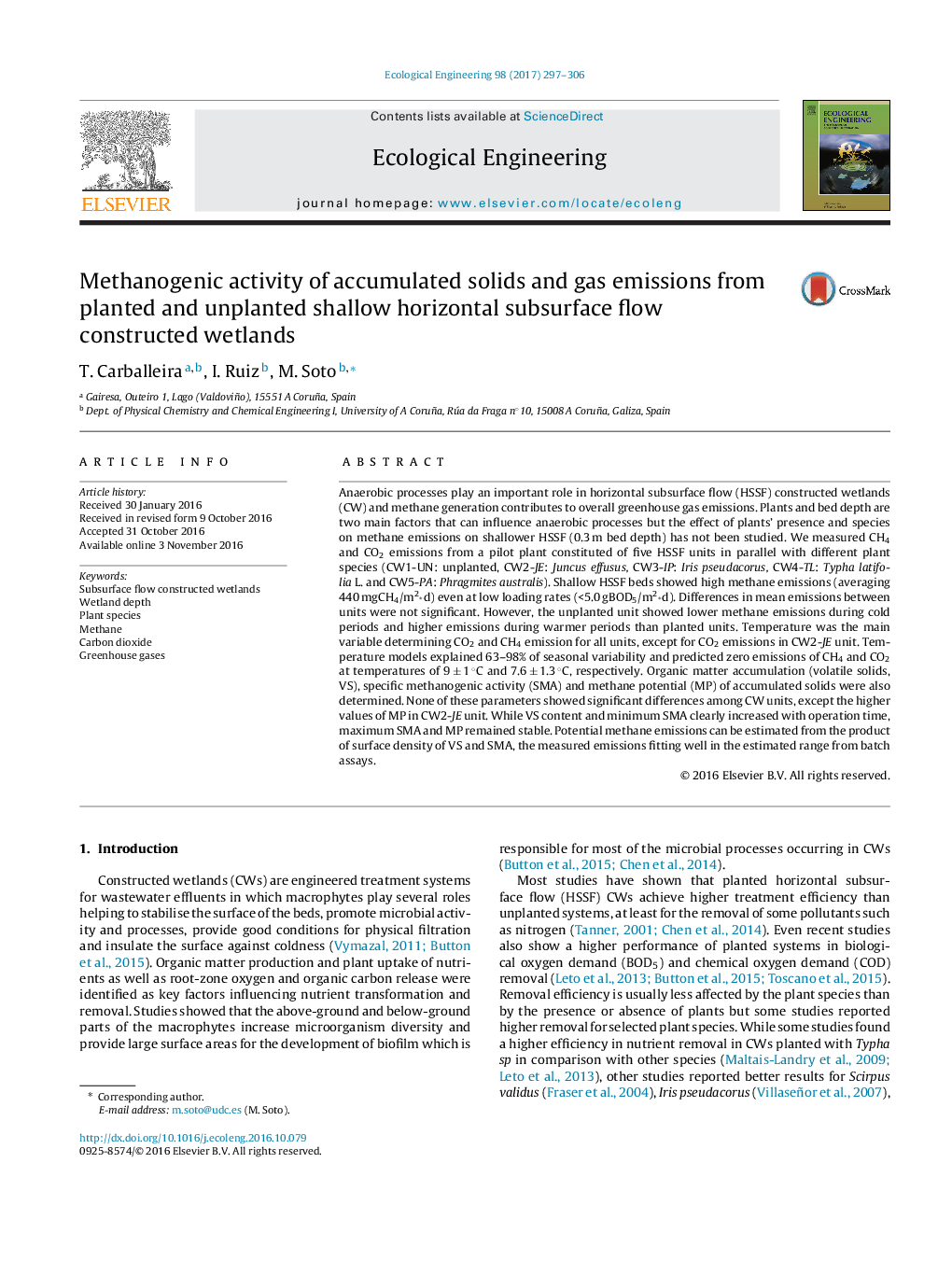| کد مقاله | کد نشریه | سال انتشار | مقاله انگلیسی | نسخه تمام متن |
|---|---|---|---|---|
| 5744031 | 1618001 | 2017 | 10 صفحه PDF | دانلود رایگان |
- Low load, shallow HSSF CW emitted 440Â mgCH4/m2*d on average.
- Slightly higher CO2 and lower CH4 emissions were found in planted units.
- No significant differences in emissions between units with different macrophytes.
- Temperature determined CO2 and CH4 emissions for all units except Juncus effusus unit.
- Emissions can be estimated from methanogenic activity assays of accumulated solids.
Anaerobic processes play an important role in horizontal subsurface flow (HSSF) constructed wetlands (CW) and methane generation contributes to overall greenhouse gas emissions. Plants and bed depth are two main factors that can influence anaerobic processes but the effect of plants' presence and species on methane emissions on shallower HSSF (0.3 m bed depth) has not been studied. We measured CH4 and CO2 emissions from a pilot plant constituted of five HSSF units in parallel with different plant species (CW1-UN: unplanted, CW2-JE: Juncus effusus, CW3-IP: Iris pseudacorus, CW4-TL: Typha latifolia L. and CW5-PA: Phragmites australis). Shallow HSSF beds showed high methane emissions (averaging 440 mgCH4/m2*d) even at low loading rates (<5.0 gBOD5/m2*d). Differences in mean emissions between units were not significant. However, the unplanted unit showed lower methane emissions during cold periods and higher emissions during warmer periods than planted units. Temperature was the main variable determining CO2 and CH4 emission for all units, except for CO2 emissions in CW2-JE unit. Temperature models explained 63-98% of seasonal variability and predicted zero emissions of CH4 and CO2 at temperatures of 9 ± 1 °C and 7.6 ± 1.3 °C, respectively. Organic matter accumulation (volatile solids, VS), specific methanogenic activity (SMA) and methane potential (MP) of accumulated solids were also determined. None of these parameters showed significant differences among CW units, except the higher values of MP in CW2-JE unit. While VS content and minimum SMA clearly increased with operation time, maximum SMA and MP remained stable. Potential methane emissions can be estimated from the product of surface density of VS and SMA, the measured emissions fitting well in the estimated range from batch assays.
Journal: Ecological Engineering - Volume 98, January 2017, Pages 297-306
